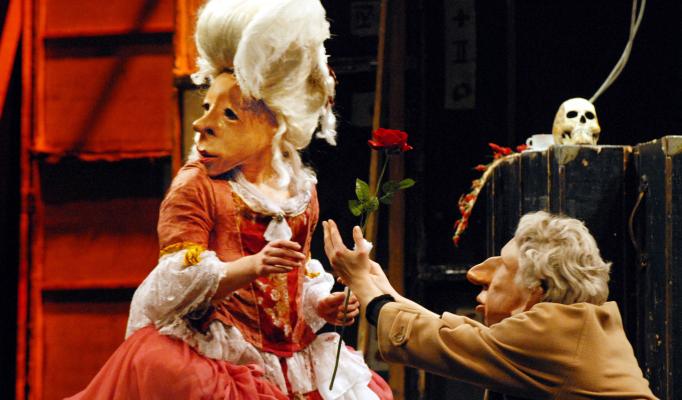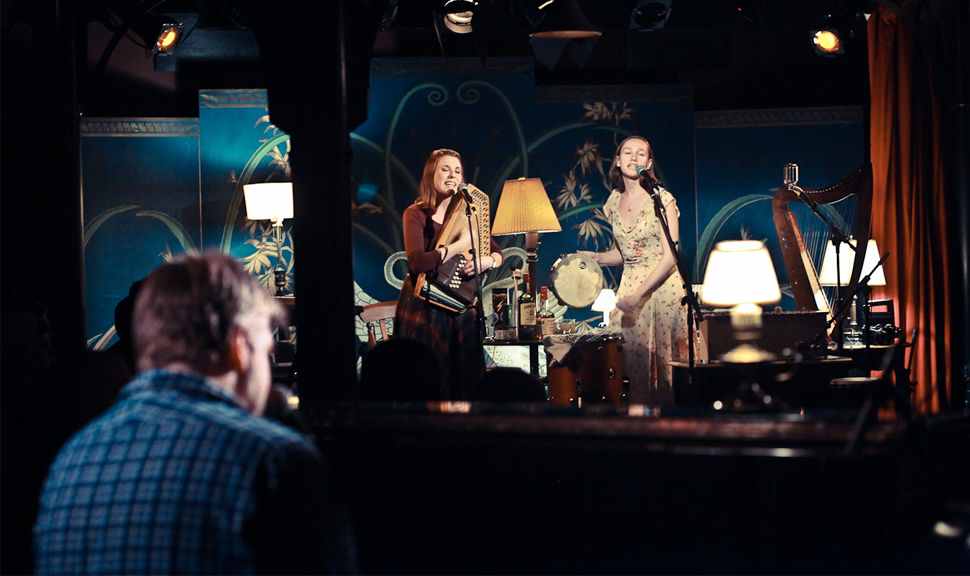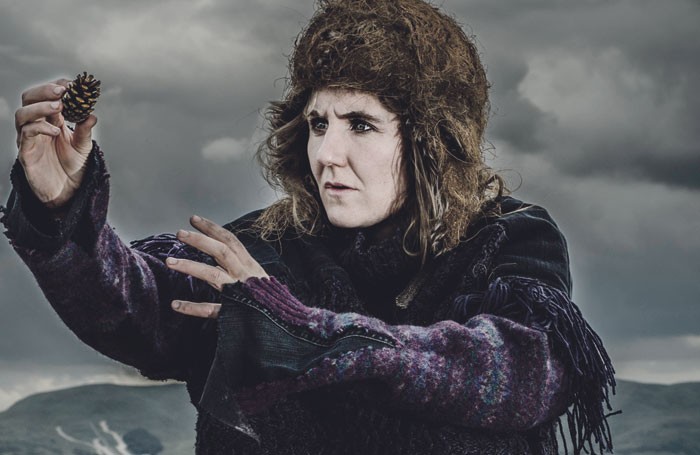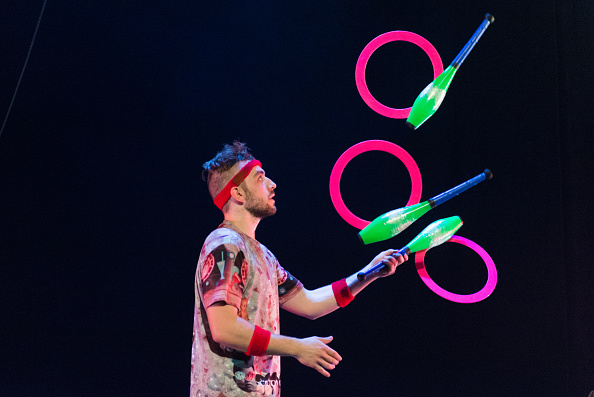Behind the dazzling lights of the theatre is an invisible world backstage. In Teatro Delusio, that world is revealed and explored by a wonderful ensemble who use masks, puppetry, illusion and robust physical performance. It is a word-free show, but with a distinct narrative – and an example of how well physical/visual theatre can tell stories.
It works to explore the subtle threshold between the manipulator and the manipulated, playing with the invisible lines between the two that bring life to the characters, who are represented by puppets that vary in size (from tiny pet to large person), and actors wearing impressive and expressive whole-head masks.
Everything is told from the perspective of backstage; the world behind the scenes of the show. The raw and rudimentary scenario shows an Italian proscenium stage from the inside out. We see the skeleton of the theatre, with its wings, stairs, high-voltage cables on all sides, a trunk of costumes, the dressing rooms, and the emergency exit leading to the street.
Witness the fragility of the young actors, and even the great and experienced stars, before entering for their scene! When they arrive late, or forget an item of costume or prop we witness their nervousness and anxiety. The work brings to light what the public never see, and probably never imagine what happens during the great and the grand theatre or opera shows. Above all, it is a great tribute to the invisible men of the performing arts: the technicians and stagehands.
In this spectacle that blends so harmoniously the beautiful and the grotesque, using modern takes on Commedia stock characters, the big stars are: Bob Efficient, strong and unpredictable technician; together with the fearful always tired Bernd (both masks inspired by the Commedia Dell’Arte’s double-act clowns, the Zanni); and the chief technician Ivan (a contemporary reconstruction of Brighella), who is always hungry and eager to keep everything organised and functional backstage.
Besides these three endearing characters, Familie Floz presents the viewer with a flurry of delightful masks full of personality and very specific corporeality: enter the orchestra conductor (a parallel to Il Capitano), the egocentric first violinist (a simple re-reading of the Tartaglia mask), the ballet (several clumsy dancers and an affected boy-diva dancer), the superstar soprano (Il Enamorata), amongst many other characters.
The Phantom of the Opera style resident theatre ghost occasionally interrupts the narrative of the show line and transports us to a supernatural universe. Who is this female spectre? Why is she seen by only one of the characters? Was it his great love? Or is the soul of the arts that berates the entire cast on their weaknesses? With this absurd magical presence, we are opened up to reflections that go beyond the day-to-day show business shenanigans, bringing metaphysical and existential questions for the characters. For the first time, we read their thoughts and we are touched by the feelings of the masks, not only through their actions, but simply by their strong presence on stage – a totally new and risky aspect to the language of masks. It is rare for a a mask to be kept alive on stage when it does not move for more than five seconds, but in Teatro Delusio when the masks stop the world around them begins to turn.
This is a work overflowing with humanity and charisma – never has backstage been so appealing, and so revealing.
Familie Floz is an international team of theatre-makers based in Berlin. The show is created in partnership with Paco Gonzalez, Bjorn Leese, Hajo Shuler and Michael Vogel, and presented in partnership with Aurora Nova.
Featured photo by Gabriele Zucca.





